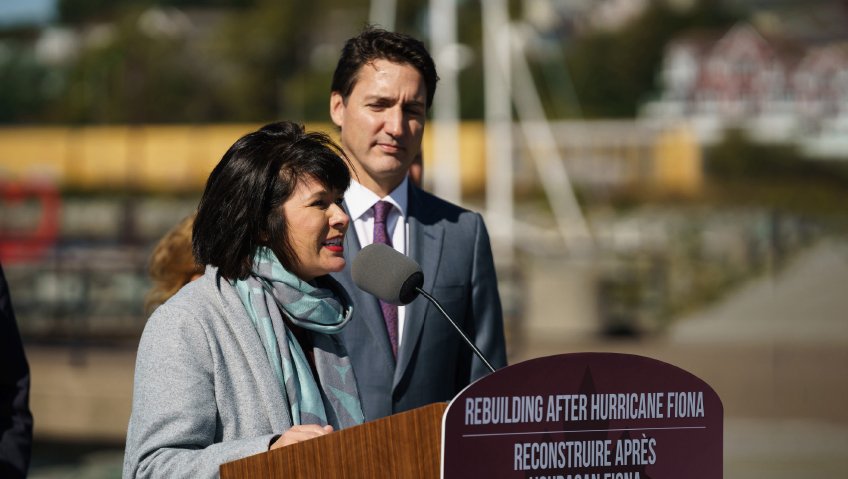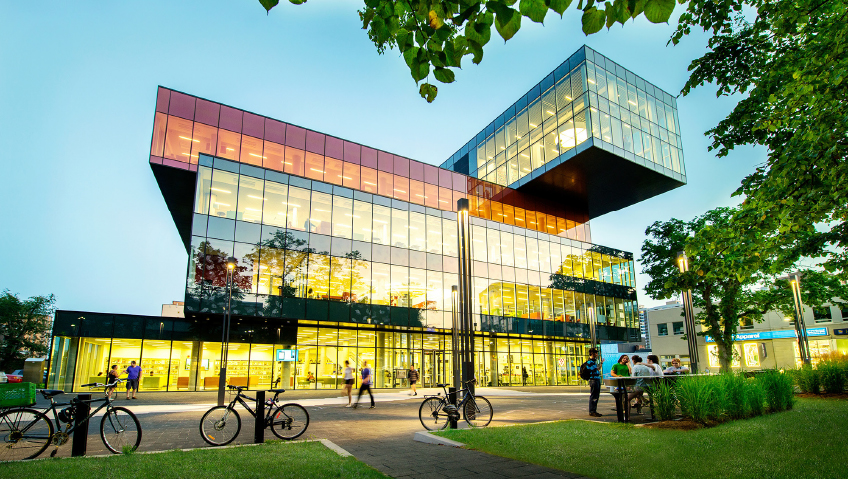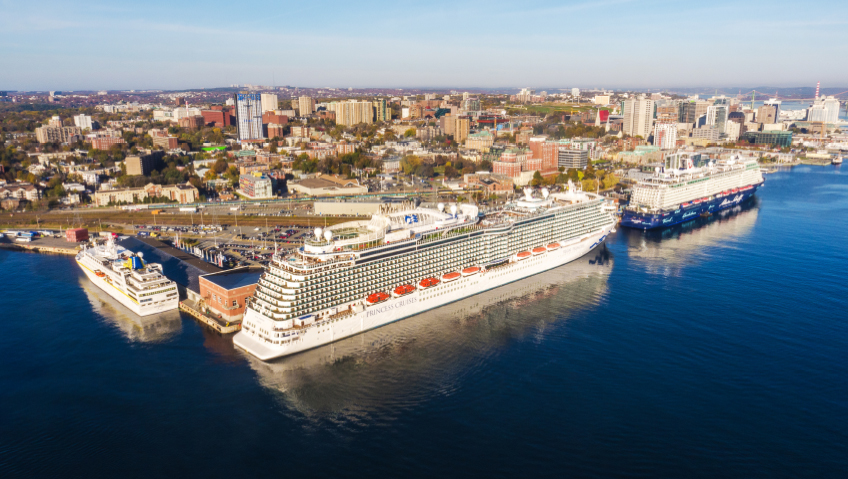Things have changed in a post-pandemic world, but the Tourism Industry Association of Nova Scotia (TIANS) is forming strategic partnerships as it builds a holistic approach to tourism to make the change for the better.
With so much to offer including 7,500 km of coastline ranging from sandy beaches to steep cliffs, deep water ports, and snug harbours; year-round recreational opportunities; festivals and events; a rich cultural history; a vibrant urban centre and charming small towns; and spectacular scenery thrown into the mix, one might think the Nova Scotia tourism industry could take care of itself, without anyone having to lift a finger.
Not so, says Darlene Grant Fiander, who has worked with the Tourism Industry Association of Nova Scotia (TIANS) for the past 28 years. Because it’s what she calls a “lean organization” with a staff of seven, she wears two hats, as TIANS president and as Executive Director of the Nova Scotia Tourism Human Resource Council (NSTHRC), a branch of TIANS.
Tourism Nova Scotia and other regional marketing organizations are doing a good job attracting visitors, Grant Fiander says, but it’s not enough to just bring people into the province; it’s about making sure they have a positive visitor experience throughout their stay, encouraging their return, and ensuring tourism operators can access resources, all key ingredients of a successful industry, vital to the province’s economy.
The kind of positive experiences she envisions extend far beyond what are considered ‘tourist attractions’ and begin with key components such as transportation connections via air, water, or land. It’s about highway maintenance and clear signage, about human resources and solutions to the labour shortage.
It’s about forming partnerships with the realization that tourism growth can’t happen in a silo, and that each sector of the economy—education, agriculture, fisheries and oceans, culture and heritage, and the environment—is interconnected.
This summarizes Grant Fiander’s vision of a holistic approach to industry growth, and now it looks as if her vision has just moved several giant steps toward reality.
Strategic partnership
This past June at the annual general meeting of the TIANS Board of Directors, which represents all regions of the province and a wide spectrum of industry players, Nova Scotia Premier Tim Houston made a most welcome announcement—a new strategic partnership between the Province of Nova Scotia, Tourism Nova Scotia, which is primarily responsible for marketing, and TIANS.
The steering committee is co-chaired by Darlene MacDonald, Executive Director of Tourism Nova Scotia and Grant Fiander, with the plan scheduled to be developed in 2023. Following that, businesses, communities, and the government will be able to use it to guide their own strategic planning and investments.
“TIANS has always worked with the government, but this is the first time the relationship has been formalized,” Grant Fiander says. “We welcome the opportunity to put a framework in place so government officials can see how the policy decisions they make in other areas, such as transportation, can help tourism and how, in turn, tourism can positively impact all sectors of the economy.”
History of advocacy
TIANS was established in 1977 with a mandate to improve the business environment for tourism growth. In 1989 the NS Tourism Human Resources Council was formed to address labour market issues within the tourism sector, something it continues through partnerships with the Nova Scotia Community College network; universities including Mount St. Vincent and the University of Cape Breton; the Department of Education, and with Apprenticeship Training, “making sure the programs they offer are relevant and are training people for work today,” Grant Fiander says.
But since its inception, TIANS has expanded its sphere of interests and it has become so much more, partnering with associations and stakeholders to represent the best interests of the industry.
It represents over 1,000 members, ranging from the largest players such as the Halifax International Airport to the smallest—members of the Nova Scotia Bed & Breakfast Association who offer a few rooms and breakfast in the private homes in which they live.
In between there’s a huge range of businesses and organizations, national and provincial parks, ski hill operators, wineries, film and music festivals, Indigenous groups, and museums and galleries. Annual membership fees are on a sliding scale, based on business volume.
By 2019 the sector was booming and worth $2.6 billion, providing 50,000 jobs and generating over $450 Million in tax revenue, with 62 percent of that revenue coming from non-resident tourists. Moreover, as Grant Fiander points out that, according to the World Travel and Tourism Council, the Tourism Industry has the highest multiplier effect; for every dollar invested, over three dollars is spent on Main Street.
Help from ACOA
But that was before the pandemic and lockdown brought a staggering reduction in the number of flights arriving at the international airport, and before the New Brunswick-Nova Scotia border which connects the province to the rest of the country closed for months at a time except for essential services and emergencies.
The industry was devastated with total revenues for 2020 and 2021 reduced by more than half and with over 20,000 jobs lost. “2020 was the most desperate year,” Grant Fiander shares, “and I kept thinking if tourism shuts down, the economy shuts down.”
One organization that stayed open was TIANS. The association switched into high gear, setting up a help desk to support businesses struggling to remain viable despite the odds, connecting businesses with government support when it became available, and, for those that stayed open, keeping them updated with the ever-changing COVID sanitizing protocols.
Grant Fiander is full of praise for the response of the Atlantic Canada Opportunities Agency (ACOA) to COVID, which she describes as extraordinary. “They were nimble, they addressed the real concerns of our industry, we had weekly calls with them and there was a network in place from the local level all the way up to the national level,” she explains.
“For a government agency, they pivoted well to do what was needed. They really ‘get’ tourism and they understood that the sector that was going to be the hardest hit was tourism. So, the programs they came out with saved a lot of businesses. ACOA doesn’t always get the credit it deserves, but the people there really were able to respond in the way that was needed.”
The numbers are not yet in for 2022, but with all restrictions lifted at the NB-NS border, the return of international flights, cruise ships, and the CAT (the Yarmouth, NS, ME ferry service at Bar Harbour which had been closed since 2010), they are expected to be better. However, according to Grant Fiander, it’s unlikely the numbers will return to the 2019 level before 2024, or perhaps even longer, unless there’s a concerted effort to not only rebuild the industry but to build it back differently.
New approach needed
“We just can’t keep on doing the same thing,” she says. She recalls hearing an Indigenous Elder speaking at a conference, saying, “when bad things happen, it is an opportunity to see how we can reset how we look at the environment, at business, and at our personal lives. This attitude is what we must apply to the tourism business. If we don’t, we’ll miss a once in a generational opportunity.”
This past February TIANS launched Tourism Strong NS, a resource for news, support, research, and rebuilding of the province’s tourism operations and kicked it off with a virtual Tourism Labour Market forum, with a video recording available online.
The organization has also launched three advocacy committees for Marketing & Rebuilding; Strategic Leadership, where industry leaders engage with both government and opposition leaders; and an Industry Council with representatives from key sectors and alliances, all working toward the same goal of re-establishing a flourishing tourism industry.
Sometimes, in the past, tourism “just kind of happened, but we have to be more mindful of what we do, look at the broad aspects and see everything as interconnected,” Grant Fiander says.
Ideas and more ideas
When asked for specifics, she has no shortage of ideas. “If people in the fishery are not using their boats is there a way to turn them into a tourism experience?” she asks rhetorically. “We now have 20 people looking at retrofitting their boats to use them in the off-season.”
In addition, “The wine sector is growing, but there’s an issue in terms of labour. Could we become a destination for young people to come and work in our vineyards in the same way that young people once used to go West to find work?” she wonders.
“Another incredibly important thing is to look for ways to extend the season, with festivals and events not just in the peak times, but year-round. There’s an opportunity to develop a fledgling Indigenous tourism product. What can we do to support it? Then there’s the African Nova Scotia story which includes a rich history with the Underground Railroad, which would interest people from the U.S.,” says Grant Fiander.
“We have a lot of stories to tell,” she says. “But how do we package and support them with quality infrastructure, whether it’s the place they stay in, the restaurant where they eat, or the taxi driver who brings them in from the airport? It’s all connected.”
Concludes Grant Fiander, “Now is an opportunity for the industry to focus on a broad growth strategy that considers the interconnectivity between tourism and the social, cultural, and economic health of the province. Addressing issues such as seasonality, business viability, product, and people will ensure we reclaim our position as Nova Scotia’s top service export.”






